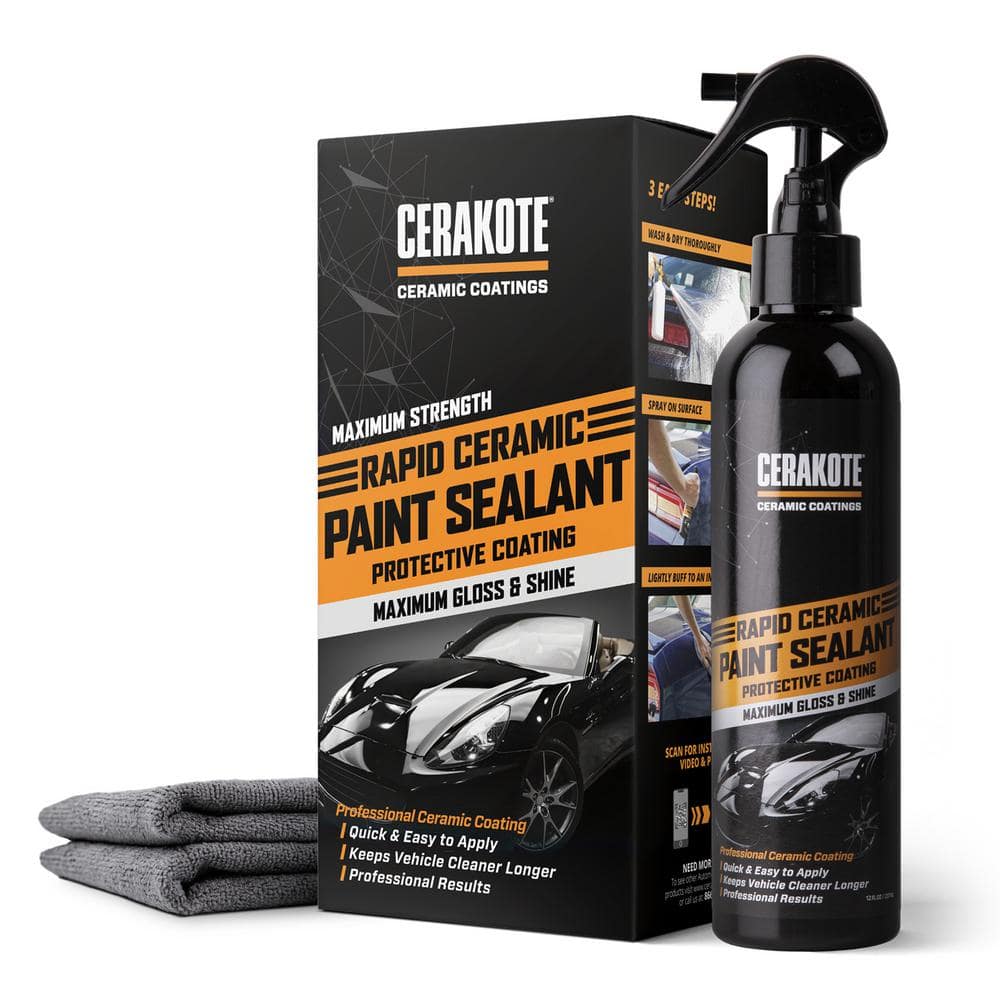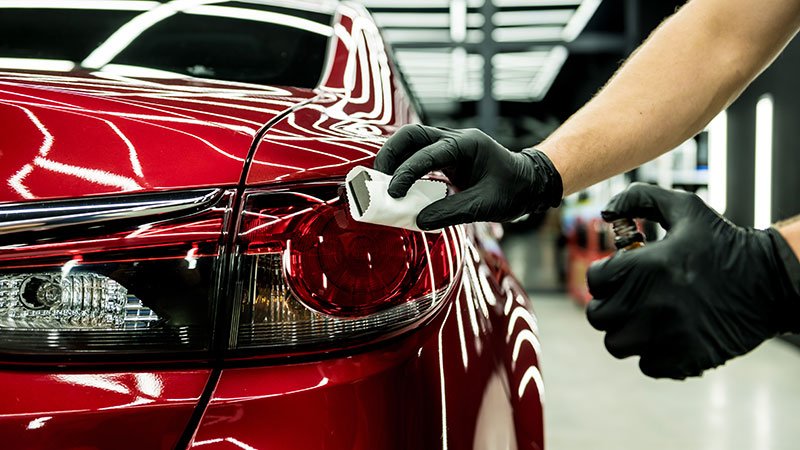Enhance Your Auto’s Appearance with Trusted Ceramic Coating Denver Experts
Enhance Your Auto’s Appearance with Trusted Ceramic Coating Denver Experts
Blog Article
A Comprehensive Guide to the Kinds Of Ceramic Finishing on the marketplace
Ceramic finishings have arised as a critical service across various industries due to their special buildings and applications. As we discover the distinct characteristics and applications of these coatings, the effects for performance and durability come to be increasingly apparent, elevating questions concerning which type may finest fit your demands.
Comprehending Ceramic Coatings
Ceramic finishes are sophisticated protective services that have obtained popularity in different industries, specifically in vehicle and aerospace applications. These layers include a liquid polymer that, when healed, forms a resilient, hydrophobic layer on the surface area of the substrate. This layer provides improved resistance to environmental pollutants, UV radiation, and chemical direct exposure, consequently expanding the life and aesthetic appeal of the underlying product.
The essential element of ceramic finishings is silica, which adds to their firmness and resilience. The application process commonly entails surface area preparation, application of the finish, and treating, which can be achieved through heat or UV light. Once treated, ceramic coatings show phenomenal bonding residential properties, permitting them to adhere highly to a variety of surface areas, including metals, plastics, and glass.
In enhancement to their protective functions, ceramic coverings additionally provide convenience of maintenance. Their hydrophobic nature decreases the adherence of dust and gunk, making cleaning simpler and less regular. Generally, the fostering of ceramic finishings represents a significant advancement in surface area protection modern technology, providing both visual and practical benefits throughout multiple markets.
Kinds Of Ceramic Coatings
Numerous sorts of ceramic finishings are readily available, each made to meet specific performance demands and applications. One of the most typical kinds consist of:
Silica-based Coatings, these coatings mainly include silicon dioxide and are known for their resilience and chemical resistance. They are extensively utilized in industrial and automotive applications.
Titanium Dioxide Coatings: Prominent for their photocatalytic homes, titanium dioxide coverings are frequently applied in atmospheres where self-cleaning and antifungal homes are preferable, such as in structure products and automobile surfaces.
Zirconia Coatings are identified by their high-temperature security and thermal resistance, zirconia finishings are made use of in applications such as generator engines and high-performance auto components.
Alumina Coatings, Showing outstanding hardness and thermal security, alumina layers are frequently used in wear-resistant applications, consisting of cutting tools and commercial equipment.
Hybrid Coatings:Incorporating the properties of numerous products, hybrid coverings use enhanced performance characteristics, making them appropriate for one-of-a-kind and demanding applications.
Each kind of ceramic finish offers unique objectives, allowing individuals to pick the most appropriate option based upon particular ecological problems and efficiency requirements.
Advantages of Ceramic Coatings

In weblink addition to toughness, ceramic finishings give exceptional hydrophobic buildings, allowing for very easy cleaning and upkeep. This water-repellent nature minimizes the adherence of dirt, crud, and various other pollutants, which can lengthen the aesthetic allure and performance of the surface. Furthermore, ceramic finishes can significantly enhance thermal resistance, making them suitable for applications that withstand heats.
An additional notable advantage is their capacity to boost surface solidity. This boosted hardness can lead to lowered damage, inevitably prolonging the life-span of the layered material. Ceramic finishings can add to energy performance by reflecting warm, which is specifically advantageous in automotive and Continue commercial setups. In general, the countless benefits of ceramic finishes make them a beneficial investment for numerous applications, making sure ideal performance and defense.
Application Refine
When applying ceramic layers, a meticulous approach is important to accomplish optimal outcomes. The application procedure generally starts with comprehensive surface area prep work. This entails cleaning, sanitizing, and brightening the surface area to get rid of all pollutants, consisting of dirt, grease, and prior waxes or sealants. A clean surface area ensures proper adhesion of the finishing.
As soon as the surface is prepped, the next action is to apply the ceramic layer. This can be done making use of an applicator pad or a microfiber cloth, making sure even coverage. It is critical to operate in tiny sections to maintain control and avoid premature curing - Ceramic Coating Denver. The coating ought to be used in thin layers, as thicker applications can cause uneven coatings.
After application, the finish requires a particular healing time, typically ranging from a couple of hours to a full day, depending on the item. Complying with these steps carefully will optimize the efficiency and durability of the ceramic layer, providing a resilient protective layer for the surface.
Maintenance and Longevity
To make sure the longevity and effectiveness of a ceramic covering, regular maintenance is necessary. Ceramic coverings, understood for their longevity and safety high qualities, need certain care regimens to optimize their life expectancy and performance.
In addition you could try these out to routine cleaning, routine inspections are important. Try to find signs of wear or damage, such as hydrophobic properties reducing or surface flaws. If needed, a light polish might be applied to renew the finishing without removing it away.
Moreover, the application of a booster spray can boost the layer's hydrophobic effects and restore its gloss. This is especially useful for finishes that have been in use for an extensive duration. Inevitably, by sticking to these upkeep methods, one can dramatically expand the life of a ceramic finish, guaranteeing that it proceeds to offer optimum protection versus ecological factors and keep the aesthetic charm of the vehicle.

Conclusion
In verdict, ceramic layers represent a flexible remedy for an array of applications, using a selection of types such as silica, titanium alumina, dioxide, and zirconia. On the whole, ceramic coverings contribute considerably to enhancing the durability and performance of numerous surface areas throughout multiple industries.
Ceramic layers have emerged as an essential remedy across numerous sectors due to their unique properties and applications.Ceramic coverings are innovative protective options that have acquired appeal in various sectors, specifically in automotive and aerospace applications. Ceramic finishes can considerably improve thermal resistance, making them suitable for applications that withstand high temperature levels.
Overall, the numerous benefits of ceramic coatings make them a beneficial investment for various applications, making sure optimal efficiency and defense.
In conclusion, ceramic coverings represent a versatile remedy for a variety of applications, using a range of types such as silica, titanium dioxide, alumina, and zirconia.
Report this page